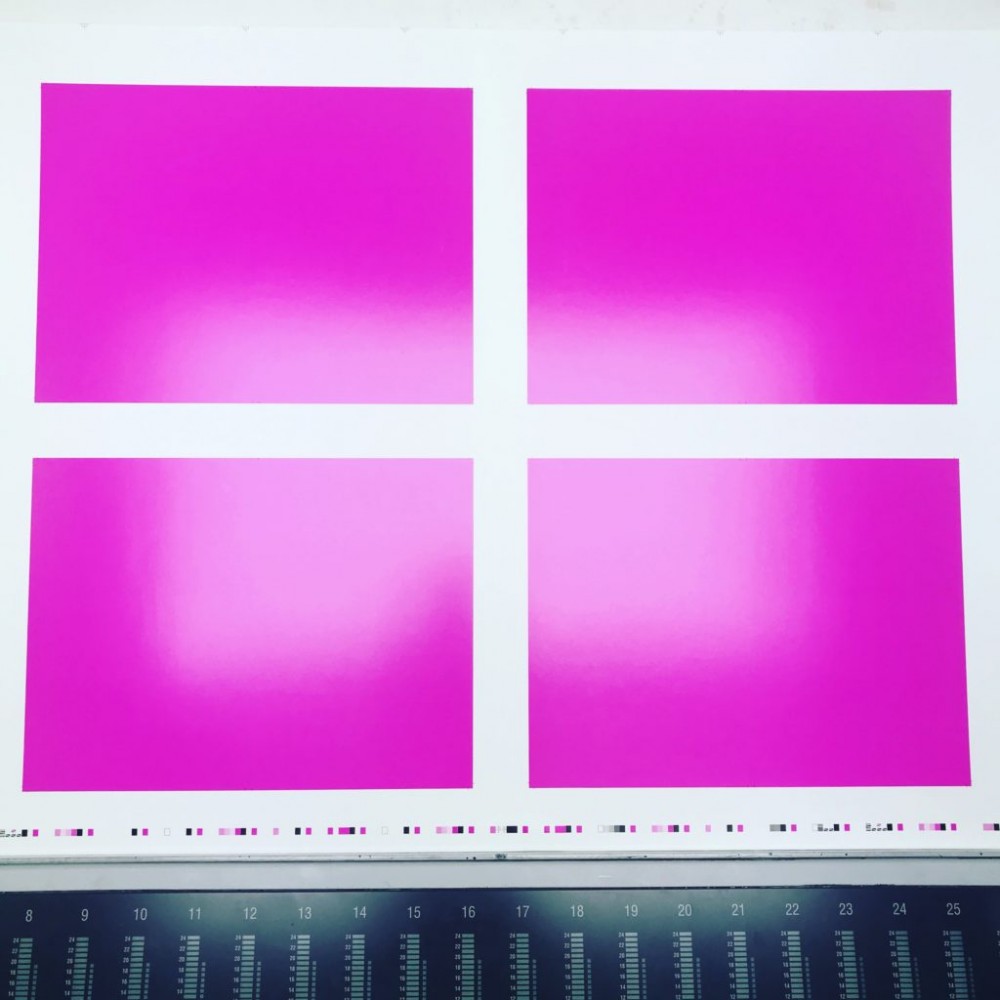When a new project is born and a new publication is produced, it unfortunately often happens that the printer is involved only at the end of the process, precisely at the time of the production itself (and not before).
While this could do the trick – or at least cause less problems – for publications in which the design and the dimension of the book as an object (as opposed to a mere ‘container of content’) are less important, it is a whole different story when they are.
For publications where the object itself is at least as important as its content, strong teamwork is needed between the designer and the printer (as you can read here).
This is obviously unachievable if:
- the designer is not aware of it
- the printer is not capable of it
Now, of course you, as the production manager (or designer himself), need to work properly to ensure that this need is clear in the mind of everyone involved in the project.
But you cannot teach a printer how to team up with you.
Sadly, it can be very frustrating to interact with someone who does not want – or cannot – give you the right support to get the result you want.
Technical skills are not enough.
It all comes down to sensitivity and experience. A printer may work with super-fast, state-of-the-art printing machines, or with the most capable engineers, but if they do not have the sensitivity to carefully understand the designer’s needs and give him the right advice, the result will always be mediocre – or not entirely satisfactory.
It is therefore crucial that you choose your printer carefully, so as not to fall into the hands of someone who is unable to produce your publication according to your own standards (in this post I explain how to choose the right printer for you).
Why is teamwork so important?
I’m quite sure you know how complicated and complex it is to produce art, photography or luxury publications.
Even in those niches, the current publishing market is more and more competitive. And while there is no doubt that an original and well-defined editorial plan is necessary, it is increasingly the object itself that makes the difference in the end.
The book as a collectible object is irreplaceable; and it will continue to be something sought and bought by an increasingly aware public for many years to come.
That is precisely why the design of a publication must be treated with great attention and clearly enhanced by production.
One is not possible without the other.
If the designer’s ideas are impracticable from a technical point of view, or from a budget or time perspective, the printer will not be able to satisfy him and problems will arise.
If the printer reproduces the designer’s ideas in an unflattering or unsuitable way – and this is why sensitivity is so important! –, this will lead us to more problems.
A good designer cannot therefore do without a close and collaborative effort with his trusted printer.
A good printer must have the right sensitivity and must be able to interact with the designer knowing perfectly whay his/her expectations are.
What are the steps to make this collaboration fruitful?
Before
The designer and the printer should always interact directly (or indirectly, for example if there is a production or project manager) before the production is launched. Choices that will influence the rest of the work must already be made in the preliminary phases, such as:
- format
- binding
- special materials or finishing details
It is only through continuous and active communication between the designer and printer that these choices can be made properly and consistently with budget and expected time frame.
Without proper communication, it is possible that these elements are determined solely by the designer’s ideas and creative concept and eventually prove to be incompatible with satisfactory technical standards.
In order to make things clear, let me repeat that not actively collaborating with the printer or collaborating with a printer who does not have the required sensitivity for your work can lead to disastrous results – the second option being even worse than the first.
During
Shortly before or during production, the designer has finalized the files and is ready to deliver them.
At this stage, interacting with the printer – especially the prepress and file control department – is crucial to forestall and avoid problems that might jeopardize the success of the production.
Sometimes, a small detail, overlooked during file checking, is enough to put an entire print run at risk.
Any printer who wants to provide a service tailored to your expectations must perform a series of systematic checks to be able to report any necessary corrections.
After
The production part is finished, but there is still work to be done. This is actually an important moment for exchange, to evaluate the collaboration process together, and possibly discuss the details of the process and the product that can be further improved in the future.
You now see why a direct and continuous exchange is so fundamental. Only through this approach can you achieve the most brilliant results, which can be appreciated by the public and the critics alike.
At Musumeci, we strongly believe that this is the key to success and we work every day to improve these aspects.
Contact us today to start your next project on these grounds.
